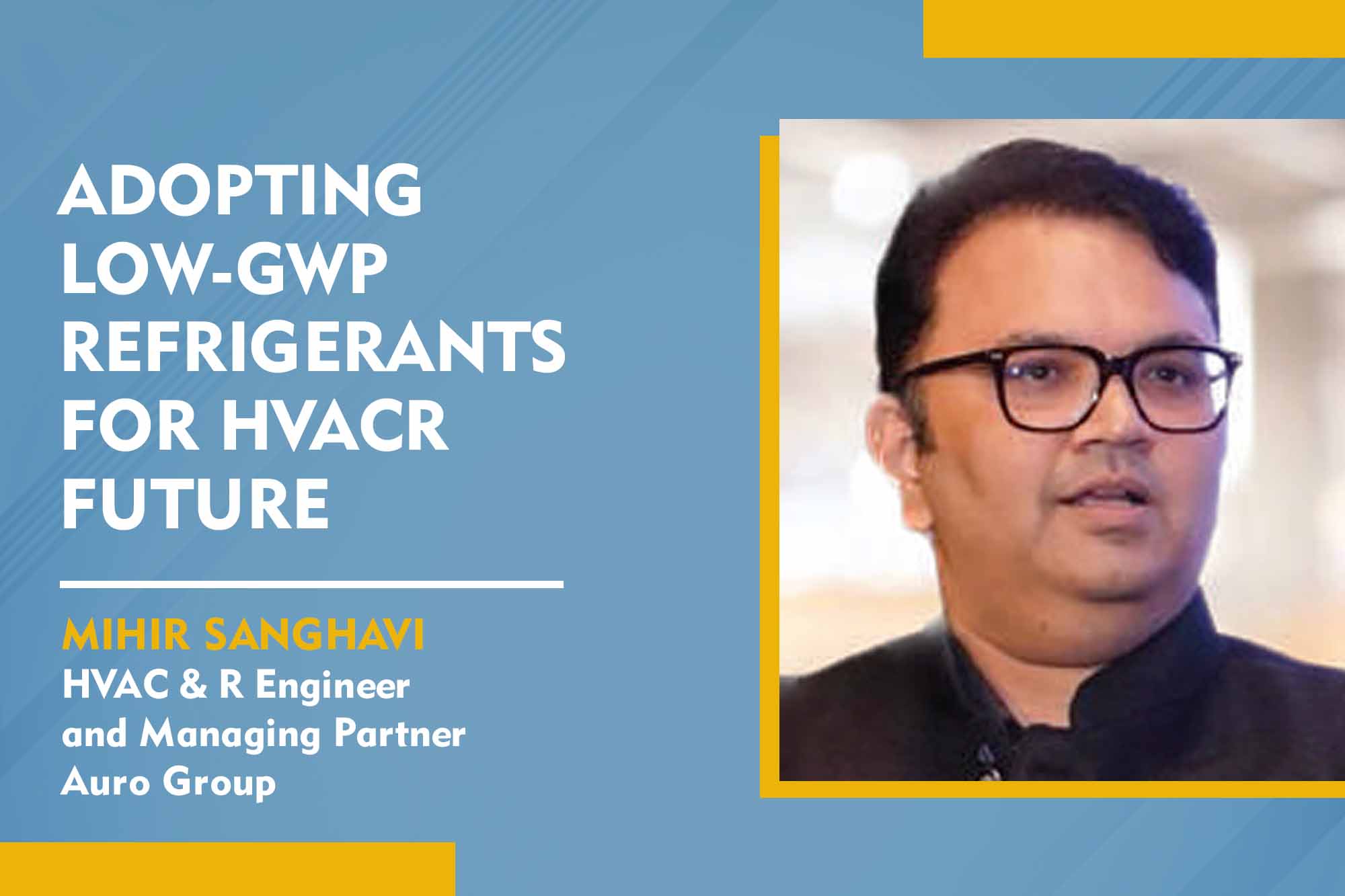Mihir Sanghavi is a seasoned professional with over 30 years of experience in manufacturing heating and cooling coils and compressor rebuilding as the managing partner of Auro Group. Holding a BE in Electronics and an SMEP diploma from IIMA, he brings a wealth of expertise to his roles. Currently serving as the National President of RATA, Vice President of ISHRAE, and Regional Communication Chair of ASHRAE RAL, Mihir is deeply involved in shaping the industry landscape and driving innovation in the field of heating, ventilation, and air conditioning.
What advancements do you envision in variable-speed compressors that enhance energy efficiency?
Variable speed compressors involve advanced control systems that adjust the compressor motor’s speed based on a building’s heating or cooling requirements. This flexibility enables the compressor to function at peak efficiency, reducing energy consumption compared to traditional fixed-speed compressors. Furthermore, motor technology advancements, including permanent magnet motors, enhance efficiency and reliability.
Please talk about new design practices in HVAC&R equipment.
Innovative design practices in HVAC&R equipment involve incorporating features such as heat recovery systems to capture and reuse waste heat from various processes, enhancing overall energy efficiency. Utilising advanced insulation materials helps minimise thermal losses, while implementing modular components facilitates easier installation, maintenance, and upgrades, increasing system adaptability to evolving building requirements.
How do measuring instruments optimise conditions in HVAC systems?
Measuring instruments offer real-time data on airflow, temperature, humidity, pressure, and air quality within HVAC systems. Building managers can make informed decisions to optimise system efficiency, guarantee comfort, and maintain indoor air quality by constantly monitoring these variables.
How do manufacturers ensure predictive maintenance in HVAC systems?
Manufacturers are integrating sensors into HVACR systems to gather data on equipment operation and performance. Analysing this data using predictive analytics algorithms identifies potential issues before they escalate into major problems. This proactive maintenance strategy minimises downtime, prolongs equipment lifespan, and reduces maintenance costs.
Please discuss how smart thermostats utilise sensors and algorithms to adjust temperature settings.
Smart thermostats and building automation systems use sensors and algorithms to adjust temperature settings based on occupancy schedules, outdoor weather conditions, and user preferences. Building automation systems enables centralised control and monitoring of HVACR equipment, empowering facility managers to optimise energy consumption, identify inefficiencies, and remotely troubleshoot issues.
What are the new trends in condensing unit technology and low GWP refrigerant usage in HVAC&R systems?
Condensing units are critical components in refrigeration systems, which convert refrigerant vapour into liquid form. Manufacturers are developing more efficient heat exchanger designs to boost heat transfer efficiency and decrease energy usage. Furthermore, there is an increasing focus on adopting refrigerants with lower global warming potential (GWP) to minimise environmental impact and comply with regulations aimed at greenhouse gas emissions reduction.
Please discuss the types of air purification technologies that can refine IAQ.
Air purification technologies are designed to enhance indoor air quality (IAQ) by removing various pollutants and contaminants. HEPA filters can capture particles as small as 0.3 microns and target dust, pollen, and bacteria. UV germicidal irradiation systems use ultraviolet light to deactivate or eliminate airborne pathogens such as viruses and bacteria. PCO systems employ photocatalytic oxidation to decompose volatile organic compounds (VOCs) and neutralise odours. Ionisation systems release ions to attract and neutralise particles, pollutants, and pathogens. Incorporating these technologies into HVAC&R systems ensures building occupants enjoy cleaner and healthier indoor environments.
Cookie Consent
We use cookies to personalize your experience. By continuing to visit this website you agree to our Terms & Conditions, Privacy Policy and Cookie Policy.












